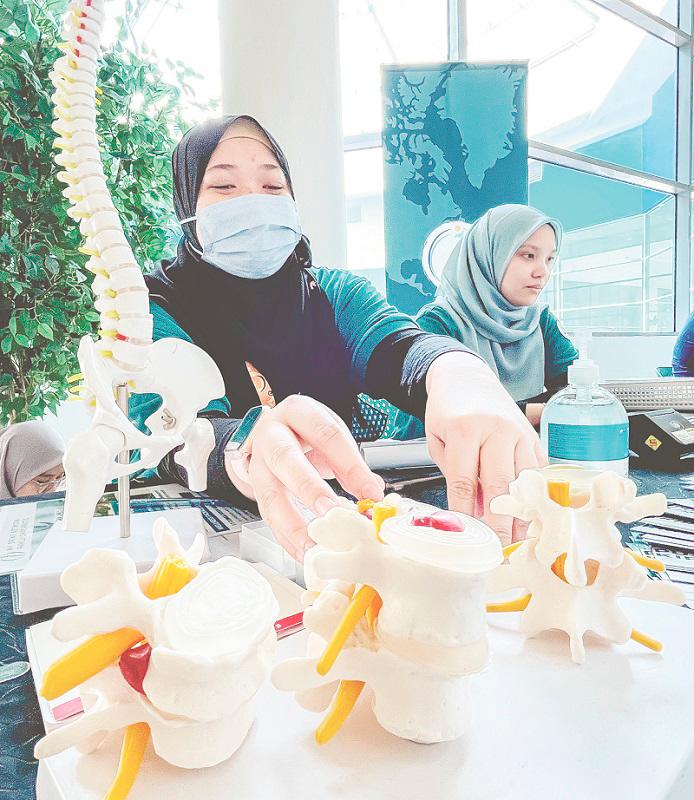THE world of STEM (Science, Technology, Engineering and Mathematics) holds the key to solving some of humanity’s greatest challenges, yet one critical resource remains underutilised: the potential of women and girls.
The underrepresentation of women and girls in STEM is not a matter of capability but of cultural, societal and systemic barriers.
As the world marks International Day of Women and Girls in Science tomorrow, it is crucial to examine why these disparities persist and how they can be dismantled.
The cultural and societal influence on girls’ career choices cannot be ignored. From an early age, societal norms and stereotypes subtly steer girls away from STEM subjects. The perception that STEM fields are more suited to men has been ingrained in various cultures for decades.
Educational materials and media portrayals often reinforce the notion that STEM is male-dominated, making it harder for young girls to visualise themselves in these professions.
Family expectations also play a critical role. In many societies, particularly in conservative or traditional households, girls are encouraged to pursue careers perceived as more “feminine”, such as teaching, healthcare or the arts, rather than science and technology. These biases, whether overt or unconscious, lead to fewer girls developing an interest in STEM-related subjects.
The visibility of female scientists, engineers and technologists in mainstream media and academia remains low. Without relatable role models, many girls struggle to see a future for themselves in STEM careers.
Historically, women have made remarkable contributions to science, yet their stories often remain overshadowed by their male counterparts.
Efforts to celebrate and highlight women’s achievements in STEM, such as the works of Marie Curie, Rosalind Franklin and Katherine Johnson, have grown in recent years.
However, modern-day role models are still needed to show young girls that these careers are viable and fulfilling. More efforts should be
made in schools, universities and workplaces to highlight successful female professionals in STEM.
Even for those who pursue STEM careers, systemic obstacles persist. Gender bias in hiring, promotions and research funding creates an uneven playing field. Women in STEM fields often report facing implicit biases
that affect their career progression.
Studies indicate that male candidates are more likely to receive research grants and tenure-track positions compared to their female counterparts, despite equal qualifications and experiences.
Additionally, workplace cultures in STEM industries often lack inclusivity, leading to higher attrition rates among women. Many STEM fields, especially engineering and technology, have been male-dominated for years, fostering environments where women may feel isolated or undervalued.
The lack of family-friendly
policies, such as maternity leave and flexible work arrangements, further exacerbates the problem, making it difficult for women to balance professional and personal responsibilities.
One of the critical factors contributing to the gender gap in STEM is the disparity in education. In many parts of the world, girls have limited access to quality education, particularly in science and mathematics. Socioeconomic factors, cultural norms and inadequate school resources all contribute to fewer girls enrolling in STEM-related courses.
Even when access to education is available, studies show that girls often underestimate their abilities in mathematics and science, even when they perform just as well as or better than their male peers. This confidence gap can deter them from pursuing STEM careers.
Artificial intelligence (AI) is one of the most promising and rapidly advancing sectors in STEM, yet it starkly reflects gender disparity.
A 2020 report by the World Economic Forum found that women make up only 22% of AI professionals globally. Without diverse perspectives, AI systems risk being biased and exclusionary.
For instance, AI algorithms trained on datasets that lack female representation may perpetuate gender stereotypes or fail to address the needs of half the population. Ethical AI development requires input from diverse groups, making it imperative to encourage more women to enter and thrive in this field.
Addressing the gender gap requires multiple interventions. Schools should introduce STEM subjects at an early age in a way that is engaging for both genders.
Initiatives such as coding camps, science fairs and hands-on experiments can help spark curiosity among girls. Gender-neutral learning materials and toys can help dismantle preconceived notions about STEM being a male-dominated field.
Creating visibility for female role models is equally essential. Media campaigns should actively showcase successful women in STEM to inspire girls. Schools and universities should invite female scientists, engineers and technologists for guest lectures and mentorship programmes.
Companies should implement structured mentorship programmes to support women entering STEM careers. Workplace inclusivity must also be prioritised. Organisations should implement policies promoting diversity, equity and inclusion (DEI), regardless of the challenges DEI initiatives have faced under America’s new president.
Companies need to provide equal pay, fair hiring practices and advancement opportunities for women. Workplace flexibility, such as remote working options and parental leave, should be prioritised to retain female talent in STEM fields.
Investing in education and scholarships for women is another vital step. Governments and private organisations should provide financial support for women pursuing STEM degrees.
Governments should enforce equal pay laws and require companies to report gender pay gaps. Research institutions should ensure that funding opportunities are equally accessible to female-led projects.
Leadership development programmes should be created to prepare women for senior STEM positions.
While gender gaps in STEM exist globally, some regions face more significant challenges. In low- and middle-income countries, such as Pakistan and Nigeria, cultural norms and limited access to education disproportionately affect girls’ participation in STEM.
In these regions, societal expectations often prioritise domestic roles for women over scientific or technological careers. Even in developed economies, such as Japan and South Korea, deeply ingrained gender norms hinder progress.
Despite having high-quality education systems, cultural attitudes discourage women from pursuing long-term careers in STEM.
The lack of women’s participation in STEM is not just an issue of equality but one of global progress. Innovation thrives when diverse perspectives shape scientific and technological advancements.
Women must rise above self-doubt and excuses, for the time to act is now. By embracing STEM and the opportunities it holds, they can not only shape their futures but also pave the way for generations to come.
Dr Bhavani Krishna Iyer holds a doctorate in English literature.
Her professional background encompasses teaching, journalism and public relations.
She is currently pursuing a second master’s degree in counselling.
Comments: letters@thesundaily.com









